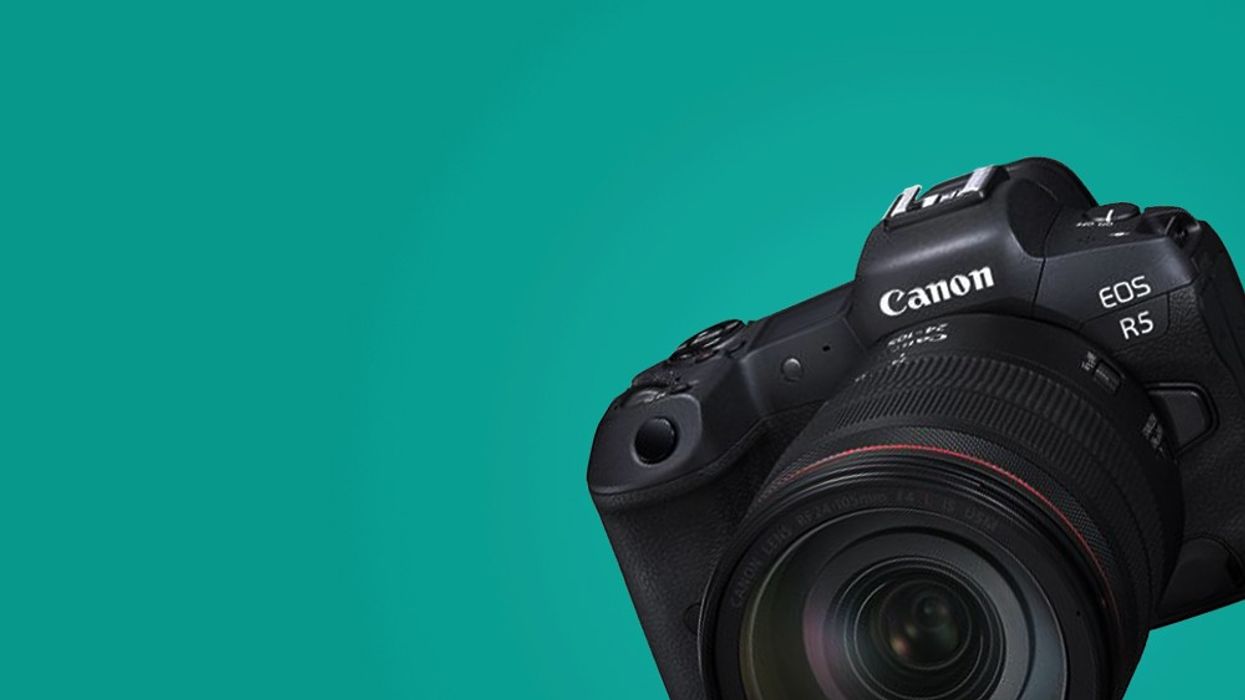
When Phillip Bloom's latest video popped up in our YouTube subscriber feed, the headline caught our eye: "The BEST HYBRID on the market - but a HOT & MESSY start!"
Thumbnail image aside, we knew it had to be about the Canon EOS R5, but what we didn't realize was that Bloom was going to take us on a personal historical journey detailing the why.
As the filmmaking community continues to grow and we learn from each other, Bloom always seems to add a collectively calm perspective in a mishmash of information. He's like the Godfather of the DSLR revolution having gotten the jump on creating moving images with the cameras over 10 years ago, about the same time No Film School took off.
In a two-part series, Bloom discusses his initial frustrations with the overheating on the R5, which we ran into every single time we did our own testing. It made the 8K and 4K high-speed modes nearly unusable until Canon released software to improve the recovery time.
But similar to us, Bloom admits he started to like the R5 over time because it fits his style of shooting.
And that's key. A camera, lens, or sound recorder that's great for someone else might not be perfect for you.
No Film School can't say it enough that it's important to hear from different perspectives to help inform your own opinion when you're searching for an answer. If you only hear from one point of view, you most likely are not getting the full picture. It's why we share different videos on our site. To give you a point of view that you may not have considered or know about.
As with any camera release, there's going to be an initial onslaught of information from reviewers and the community, and with the EOS R5, there were plenty. That was followed by theories, ideas, and conspiracies as to why the camera overheats. There were also some ingenious ways to bypass the issue altogether, albeit most would negate the camera warranty.
DIYPerks even went full-on engineering mode to eliminate the overheating issue altogether. If you haven't watched the lengthy video, it's worth the time. If Canon incorporates some of the ideas into its next-gen full-frame mirrorless camera, it could solve some of the issues.
For us, we grew to like the R5 and learned how to work with it, and took advantage of features that other cameras do not offer.
Punching in on 8K for a 4K or even HD delivery is just one of those perks. When it comes to stills, the R5 produces some of the best images out there, but if you do lean more towards still photography than video, something like the Sony a7R IV is the camera to consider. But if you're already invested in Canon EF or Nikon F lenses, do you make the switch?
And that's the thing.
If you don't have a lot of bread in your bank account, the decision on what should be your workhorse A-camera will boil down the type of work you do.
If you're a wedding videographer, the Canon C70 or Sony FX6 are worth considering.
If you're a vlogger, go compact like the Sony ZV-1 and mount a better microphone on it. If you can't afford that, grab a smartphone and add in something like the Rode Vlogger Kit.
If you shoot indie shorts, Blackmagic has its Pocket Cinema 6K and 4K cameras.
The short answer to most debated topics is there will never be an end-all solution for all of us.
It's why it's important to have a historical perspective and realize what's available to you now is only because those before you pushed the limits of what was in front of them. There's a history behind filmmaking, and the democratization of its process is fairly young. Things will change. We want companies to try something new and fail. That's what moves innovation forward and creates price points for cameras that are cheaper than an Apple iPhone.
No matter what side of the fence you are on with regards to the EOS R5, what Canon did is a good thing. Rumors suggest that Sony is getting ready to release an all-new a9 with 8K recording which won't overheat.
In the coming years, the overheating discussion will be a moot point and we'll look back at the R5 as the camera that started it—at least in the mirrorless world (sorry RED)—just like Canon serendipitously started the HD boom with 5D Mark II that helped launch No Film School and many of your careers today.
As for Bloom, he plans to release the second part of his R5 series soon, so be sure to subscribe to his YouTube channel. We'll also update this post when it comes out.
Update: Bloom shared part two with us in comments below so we posted it below. P.S. Sorry to see someone stole your R5, Phillip. Not cool at all.
Has there been a camera or piece of gear you had initial reservations about but ended up enjoying? Tell us about it in the comments below.












